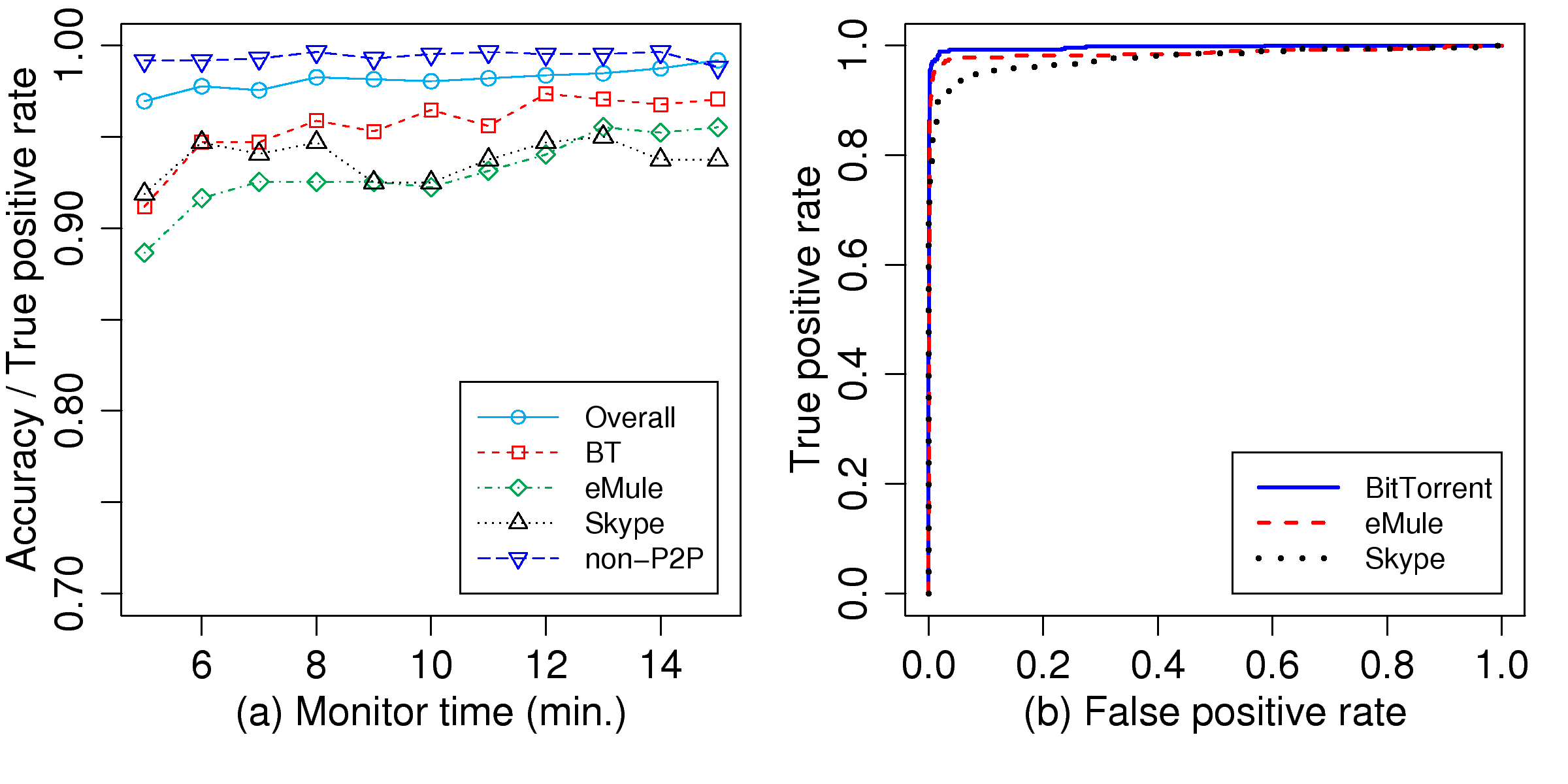[1]
"L7-filter Supported Protocols,"
http://l7-filter.sourceforge.net/protocols/.
[2]
H. Bleul, E. P. Rathgeb, and S. Zilling, "Evaluation of an efficient
measurement concept for p2p multiprotocol traffic analysis," in
EUROMICRO '06: Proceedings of the 32nd EUROMICRO Conference on Software
Engineering and Advanced Applications. Cavtat, Croatia: IEEE Computer Society, 2006, pp. 414-423.
[3]
D. Bonfiglio, M. Mellia, M. Meo, N. Ritacca, and D. Rossi, "Tracking down
skype traffic," in
Proceedings of IEEE INFOCOM'08, Phoenix, AZ, USA,
2008, pp. 15-17.
[4]
F. Constantinou and P. Mavrommatis, "Identifying known and unknown
peer-to-peer traffic," in
NCA '06: Proceedings of the Fifth IEEE
International Symposium on Network Computing and Applications, Cambridge,
MA, USA, 2006, pp. 93-102.
[5]
T. Karagiannis, A. Broido, M. Faloutsos, and K. claffy, "Transport layer
identification of p2p traffic," in
IMC '04: Proceedings of the 4th ACM
SIGCOMM conference on Internet measurement, Taormina, Sicily, Italy, 2004,
pp. 121-134.
[6]
T. Karagiannis, K. Papagiannaki, and M. Faloutsos, "Blinc: multilevel traffic
classification in the dark," in
Proceedings of ACM SIGCOMM'05,
Philadelphia, Pennsylvania, USA, 2005, pp. 229-240.
[7]
X. Lu, H. Duan, and X. Li, "Identification of p2p traffic based on the content
redistribution characteristic," in
ISCIT'07: Proceedings of the
International Symposium on Communications and Information Technologies,
Sydney, Australia, 2007, pp. 596-601.
[8]
M. Perenyi, A. G. Trang Dinh Dang, and S. Molnar, "Identification and analysis
of peer-to-peer traffic,"
Journal of Communication, vol. 1, no. 7,
pp. 36-46, 2006.
[9]
S. Sen, O. Spatscheck, and D. Wang, "Accurate, scalable in-network
identification of p2p traffic using application signatures," in
WWW
'04: Proceedings of the 13th international conference on World Wide Web, New
York, NY, USA, 2004, pp. 512-521.
[10]
S. Sen and J. Wang, "Analyzing peer-to-peer traffic across large networks,"
IEEE/ACM Transactions on Networking (TON), vol. 12, no. 2, pp.
219-232, 2004.


